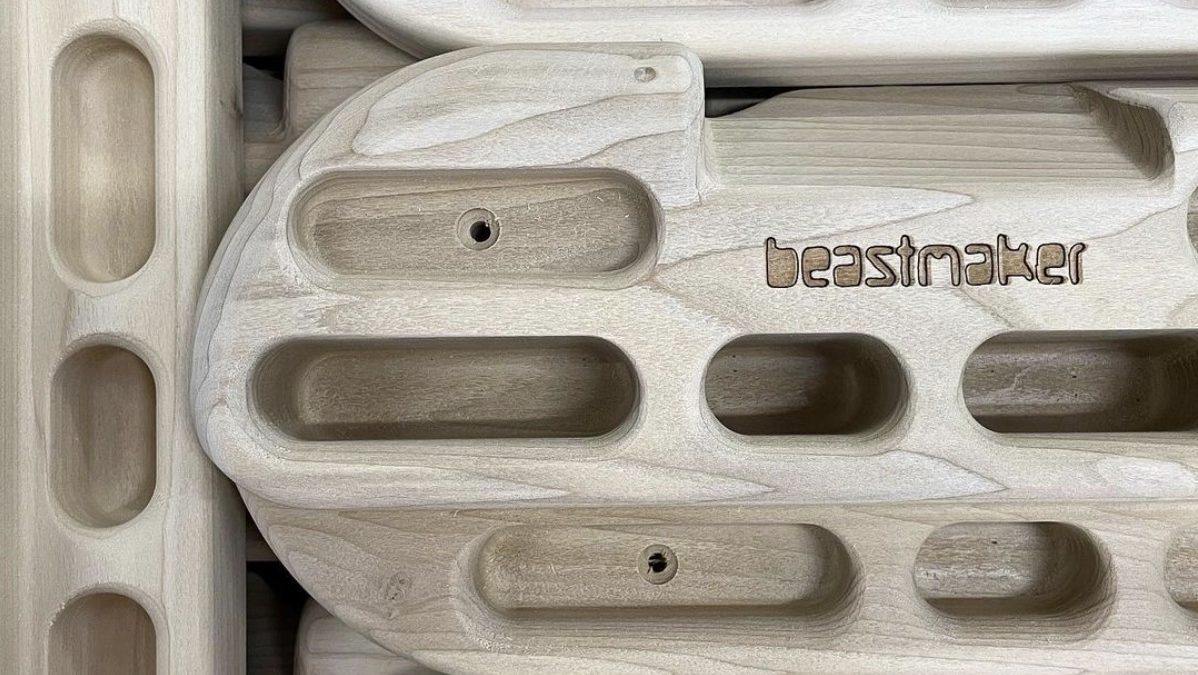Level-Up Your Strength-Endurance with This Training Tool
The classic hangboard repeater is a great exercise for building strength-endurance quickly across a range of grip types

There are lots of different ways to boost your strength-endurance, and each method comes with its own pros and cons. Strength-endurance is often grouped in with power endurance, but it specifically characterizes the ability to grip hard over and over again. Power endurance more broadly is the ability to pull hard, deadpoint, and throw to holds continuously.
When designed correctly, bouldering 4x4s and lead route laps—two classic power-endurance exercises–are great at boosting finger and forearm strength-endurance while simultaneously providing mental training by forcing you to stay calm and technical under an extreme pump.
Depending on your local climbing gym set-up, however, it can sometimes be difficult to customize these on-wall exercises for strength-endurance in the fingers and forearms. For example, if you’re training for a pumpy, edgy and crimpy outdoor project, it can be hard to replicate this if your gym doesn’t have suitable boulders or routes set.
This is where hangboard repeaters come in. They’re a simple exercise, they’re quick and efficient to perform, and you can do them from the comfort of home—assuming you have a hangboard or edge to use.
With hangboard repeaters, you perform a series of hangs, each separated by a very short rest. The time you hang, the time you rest, the number of reps, the number of sets, and the rest period between sets are all customizable. So too is the edge size you choose as well as how much weight you add or remove while performing the exercise (bodyweight vs. extra weight added to harness vs. weight offset with a pulley system).
Lower-resistance protocol
In the context of building strength-endurance, a classic repeater protocol is seven seconds on followed by three seconds off. When starting your power endurance training phase, it can be a good idea to first do a couple weeks of lower weight repeaters to build up to harder repeater sessions. If you’re new to repeater training or just starting your power endurance training phase of the season try this protocol:
- 7 seconds on, 3 seconds off
- 10 to 12 reps
- 6 sets
- Rest 4 minutes between sets
- Resistance should be 50% of strength maximum (see more on this below)
You should feel a high degree of pump during this workout. The final few reps should be difficult but you should not be failing.
Higher-resistance protocol
If you’re at a more advanced level and have performed the lower-resistance repeaters for a couple weeks, you can move onto heavier hangs. Here’s a good protocol for building endurance for 60-second-or-so crux sections:
- 7 seconds on, 3 seconds off
- 5 to 6 reps
- 6 sets
- Rest 3 minutes between sets
- Resistance should be 70% of strength maximum (see more on this below)
The final two reps should be difficult to complete in the sets but you should not fail. You should feel a moderate pump after the workout and quite powered out.
Important notes
- Warm up thoroughly before performing repeater training.
- You can perform repeater training twice per week.
- Try to have a rest day before and after repeater training as the exercise is quite taxing on on the fingers and forearms.
- If you find you are completing all reps easily, especially in your final sets, increase the weight in your next session.
- If you find yourself failing before the seven seconds are up, or if you form is starting to slip, reduce the resistance.
- You can perform repeater training on different hold types—large edges, smaller edges, pockets, pinches, slopers—depending on your goals. Start with low resistance when training a new hold type.
- You can train different grip types (half crimp, open hand, three-finger drag) but be sure to stick to one grip type for the entire six sets.
- Advanced climbers can also try increasing resistance to 80%. Reduce the number of reps to 5 if using this high weight. This is a good protocol for targeting harder yet shorter power endurance crux sections.
- If you’re newer to climbing, it’s probably best to perform on-wall strength and power endurance training. This way, you’re working on developing technique while also building fitness.
Determining your maximum strength
To figure out your 50% or 70% resistance levels, you first need to determine your maximum strength. Be sure to rest at least a day before performing your max strength test.
A typical finger strength testing method is to perform seven or eight reps of increasingly heavier seven-second deadhangs on a hangboard hold of your choice (e.g. 20mm edge) using a specific grip type (e.g. half crimp). Your max strength score is determined by the highest weight you can successfully perform the full seven-second hang with good technique.
For example, if you weigh 150 lbs and can complete a hang at 50 lbs but fail or lose form at five seconds when adding 55 lbs, then your max strength score is 200 lbs (150 lbs + 50 lbs), or 133% bodyweight. If you were then going to perform the lower resistance repeater protocol of 50% max strength, you would want 100lbs of resistance (50% of 200 lbs). In this case, being 150 lbs, you would need to offset 50 lbs using a pulley system.




